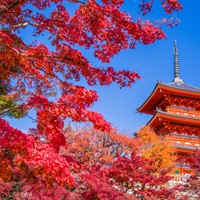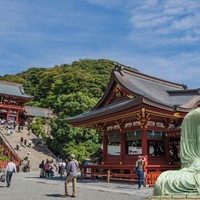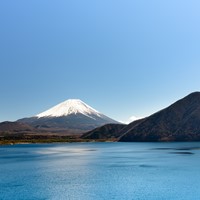Discover Ibaraki in 2 Days: A Perfect Blend of Nature, Culture, and Sake from Tokyo

This article is contributed by Concierge Bank Co, Ltd.
Just a 45-minute ride on the Tsukuba Express from Akihabara, Ibaraki Prefecture is located only 30 kilometers (18 miles) northeast of central Tokyo. To the east, you’ll find endless stretches of crystal-clear blue sea. Inland, discover lush, majestic mountains and an expansive lake. This region offers exquisite cuisine born from its abundant nature. Ibaraki boasts rich cultural heritage developed over centuries, while Tsukuba is renowned for its cutting-edge advancements in space research and technology.

Tsukuba Express
Among its many attractions, here are some of the most famous: Hitachi Seaside Park dazzles in spring with its fields of Nemophila, creating a sea of blue, and in autumn with its vibrant red Kokia contrasting beautifully with seasonal cosmos flowers. Kasumigaura, Japan’s second-largest lake, is so expansive it can be mistaken for the sea. The Ushiku Daibutsu, a bronze statue towering 120 meters, holds the Guinness World Record for the tallest bronze statue in the world. These iconic sights, whether you’ve seen them in photos or are discovering them for the first time, are all located in Ibaraki Prefecture!

Hitachi Seaside Park (kochia)
In Ibaraki, with its unique character as highlighted above, even international visitors can experience traditional Japanese culture up close and fully appreciate the allure of 'Japan.' Here’s an ideal itinerary for a 1-night, 2-day trip from Tokyo, designed to immerse you in the best of what Ibaraki has to offer.
Day1:Embark on a Private Car Journey to Explore Ibaraki’s Treasures
On the roughly 90-minute journey from Tokyo, you’ll catch a glimpse of the Ushiku Daibutsu, the world’s tallest bronze statue, from the window—an early taste of Ibaraki’s unique charm that’s sure to captivate you. After taking in these sights, you’ll continue on to 'Tree House Bonsai,' located in the southern part of Ibaraki Prefecture.

Ushiku Daibutsu
Experience the Joy of Bonsai at “Tree House Bonsai”
Upon arrival at your first stop, 'Tree House Bonsai,' you’ll be greeted by Adam Jones, the only Western bonsai master in Japan to have established a bonsai garden. Adam discovered bonsai through the movie The Karate Kid when he was a child, and after being struck by the art of bonsai during his visit to Japan in 2011, he decided to pursue serious training. Today, driven by a passion to share Japan’s aesthetic traditions with the world, Adam opened 'Tree House Bonsai' as a place where people can experience bonsai firsthand—a tradition that, due to language and cultural barriers, has been difficult for many to access.

How interested are you in bonsai? While there are enthusiasts around the world—evidenced by the World Bonsai Convention held every four years in different countries—even if bonsai isn’t on your radar yet, this is a place you won’t want to miss.

Here, you’ll participate in a special workshop led by Adam himself. He’ll guide you through a traditional Japanese stroll garden, explaining the techniques and history of bonsai along the way, before you get the chance to create your own bonsai masterpiece. With Adam’s hands-on instruction, you’ll learn the techniques needed to care for your bonsai at home, allowing you to continue enjoying this beautiful art form long after your visit.

Explore the Seasonal Splendor of Hitachi Seaside Park
After immersing yourself in the aesthetic tradition of Japanese bonsai, head to the stunning Hitachi Seaside Park, one of Ibaraki's proudest attractions. From mid-April to early May, about 5.3 million baby blue eyes (nemophila) blanket the hills in a sea of blue, blending seamlessly with the sky and ocean in a breathtaking panorama.

Hitachi Seaside Park (baby blue eyes)
In October, around 33,000 kochia bushes turn a brilliant red, creating a striking contrast with the autumn flowers like cosmos at the base of the hill. When you think of Ibaraki, many people may immediately picture these iconic views from 'Miharashi Hill.'

Hitachi Seaside Park (cosmos & kochia)
Stay at SUIGOEN, a serene villa with stunning views of Kasumigaura
Today, your accommodation is ‘SUIGOEN,’ a traditional Japanese house that is over 50 years old and has been beautifully restored using classic construction techniques. From this serene location, you can enjoy stunning views of Kasumigaura, Japan's second-largest lake, and on clear days, witness the sunrise over the expansive horizon.

As a hub for Kasumigaura Gastronomy Tourism, the villa offers meals prepared in its dedicated kitchen with fresh, local ingredients, including fish from the lake, vegetables and rice grown along its shores, and fruits harvested from nearby forests. Enjoy a leisurely, private retreat in your lakeside cottage.


Day2:A Journey Through Ibaraki’s Rich Culture and Craftsmanship

Admire the Fusion of Architecture and Nature at Hirosawa Museum of Art
Designed by renowned architect Kengo Kuma, this museum features a unique design where stone takes center stage. The building is clad in approximately 6,000 tons of natural stone sourced from across the country, making the exterior nearly invisible. Highlights of the museum include Japanese gardens designed by landscape architect Chuichi Saito and two gardens by landscape architect Shunsaku Miyagi. Together with Kengo Kuma's architectural masterpiece, these elements make Hirosawa Museum of Art a must-visit destination.

Hirosawa Museum of Art

Hirosawa Museum of Art
Wrap Up Your Journey with a Sake Tasting at “ISOKURA Sake Brewery”

Finally, your last destination is ISOKURA Sake Brewery, located in Kasama City, Inada. Known as the top producer of 'mikageishi' granite, this brewery has been brewing sake for over 150 years. The pure water, which filters through mikageishi, is said to be ideal for crafting fine Japanese sake.
Enjoy a private tour including discussions with the brewers, a tour of the brewery, and tasting sake using ceramics by renowned Kasama potters.
*Please note that the experience plan may vary depending on participants' age.
Then, this concludes your Ibaraki tour. Let's head back to Tokyo in your private car.
If You Would Like to Inquire about Your Next Trip
When you start thinking about your next trip, feel free to reach out anytime from HERE. We would love to hear from you! (Consultation is free.)
















